| Columns Retired Columns & Blogs |
Is that not the exact same type of tech that Accuphase has been using in their volume controls for about thirteen years now?
I measured the Simaudio Moon Evolution 740P's electrical performance with my Audio Precision SYS2722 system (see www.ap.com and the January 2008 "As We See It"). The volume control operated in accurate 0.1dB steps, the 740P preserved absolute polarity (ie, was non-inverting) for both fully balanced and fully unbalanced operation, and pin 2 of its XLR jacks was wired hot. The maximum gain was 6.2dB for the balanced and unbalanced inputs and outputs, rather than the specified 9dB. The input impedance is specified at 22k ohms; for the unbalanced inputs I measured 21.4k ohms at 20Hz and 1kHz, and 11.2k ohms at 20kHz; for the balanced inputs, 35.2k ohms at 20Hz and 1kHz, and 24.8k ohms at 20kHz. The unbalanced output impedance was very low at all audio frequencies, at 75 ohms; the balanced output impedance was twice this value, as expected.
With the volume control set to its maximum value of "80," the 740P's balanced frequency response was flat within the audioband, and down by 0.7dB at 200kHz (fig.1, blue and red traces). The response was not affected by reducing the load to 600 ohms (fig.1, cyan and magenta traces), but turning the volume control down to "60" (–20dB) resulted in an ultrasonic rolloff of just 0.3dB at 200kHz. For unbalanced operation, the frequency response was identical to that in balanced operation. Crosstalk was unmeasurable, and the Simaudio's noise floor was virtually free from power-supply–related spuriae (fig.2). The unweighted, wideband signal/noise ratio (ref.1V output into 100k ohms, with the input shorted to ground but the volume control set to "80") was an impressive 85dB, while A-weighting improved this to 102.5dB. This is a very quiet preamp!
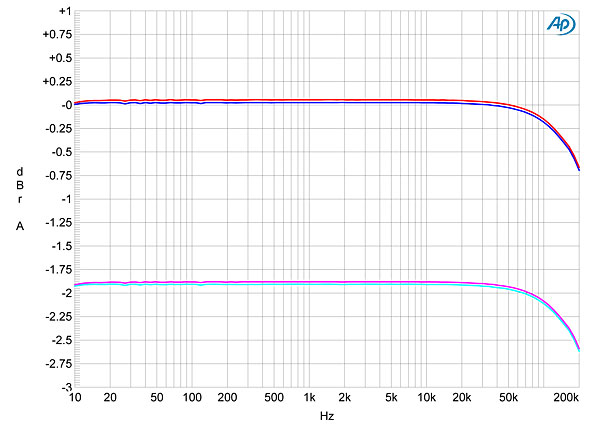
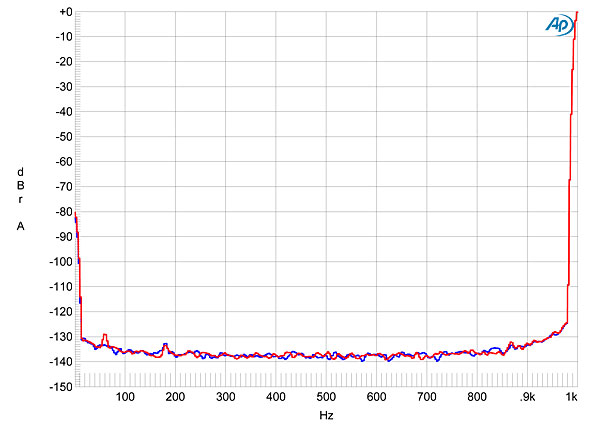
Through its balanced inputs and outputs, the 740P clipped at just over 20V into 100k ohms (fig.3), and at 12V into the punishing 600 ohm load (fig.4). For unbalanced operation (fig.5), clipping occurred at just over 10V, which is still well above the voltage required to drive any power amplifier into overload. The fact that in these three graphs the traces slope downward with increasing output voltage indicates that the actual distortion is below the noise floor almost until actual waveform clipping occurs. I therefore examined how the percentage of THD+noise changed with frequency at a very high level, 10V. Even so, the distortion hardly varied with load or frequency (fig.6).
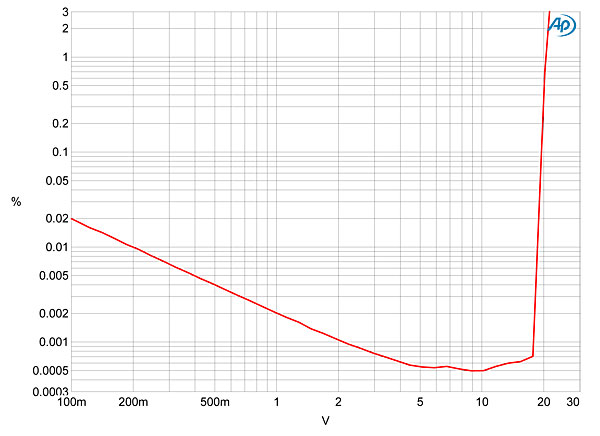
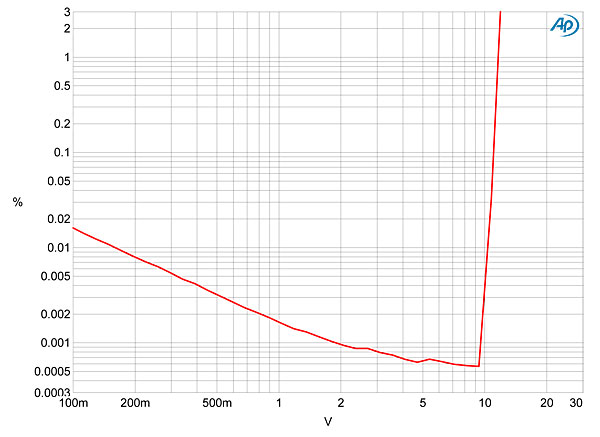
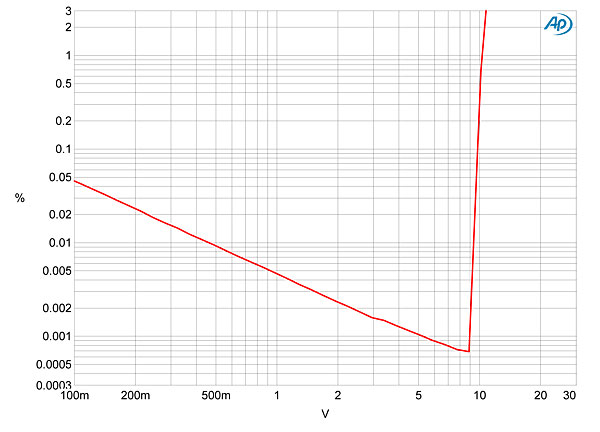
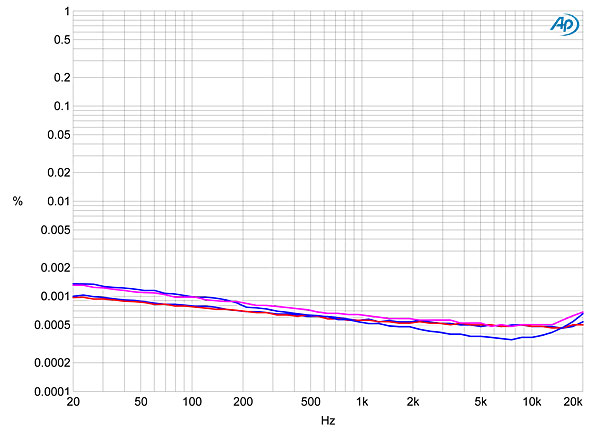
What distortion there was was primarily the third harmonic, at –110dB (0.0003%), with some second harmonic 10dB lower (fig.7). This graph was taken into 100k ohms; reducing the load to 600 ohms increased the third harmonic by 6dB but dropped the second harmonic by 6dB in the left channel, 12dB in the right (fig.8). This very low distortion was repeated for unbalanced operation, while intermodulation distortion at a typical output level was extremely low (fig.9).
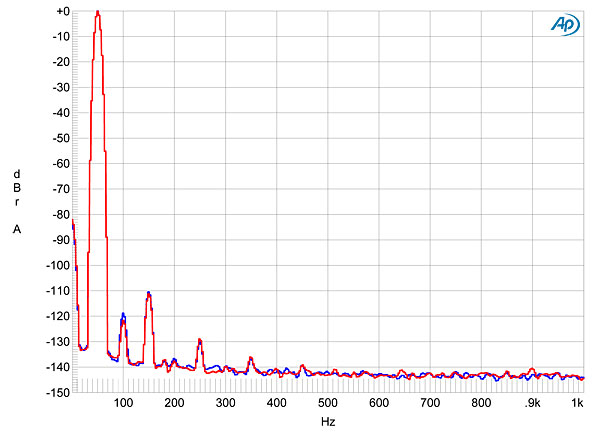
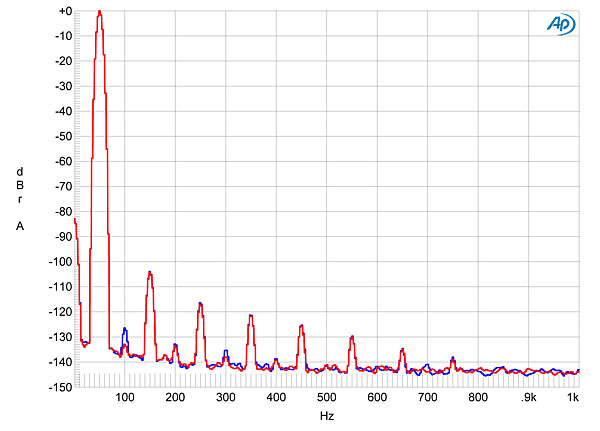
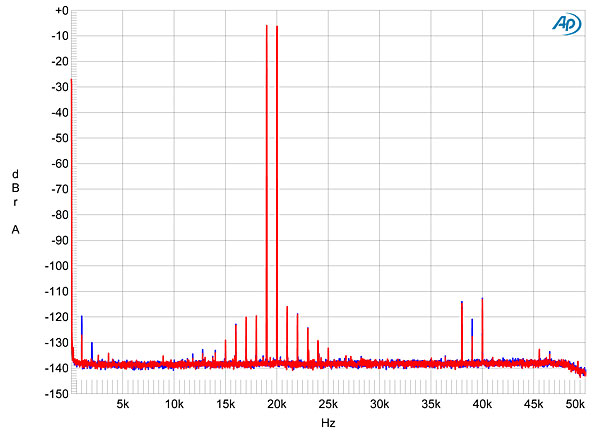
The Moon Evolution 740P's measured performance is beyond reproach.—John Atkinson

Is that not the exact same type of tech that Accuphase has been using in their volume controls for about thirteen years now?

These always reminded me of the last decade's Mark Levinson preamps.
I'd be curious to read how this preamp compares to the 850P as well.

The 740p sounded veiled. The highs lacked airiness, soft and smooth. Stereophile got it right here but the rest of the reviews are just polite words.
The bass is muddy as well.
The mevol2 stuff sounded hi-tech which served no purpose but thats just marketing hype.
It is just appalling that the review described the unit as transparent and then goes on to say that it lacked airiness. How can a preamp which costs a hefty 9.5k be transparent when its high frequency is obviously veiled.
No wonder stereophile refuses to rate it after a lengthy review. They just dumped it under cat K